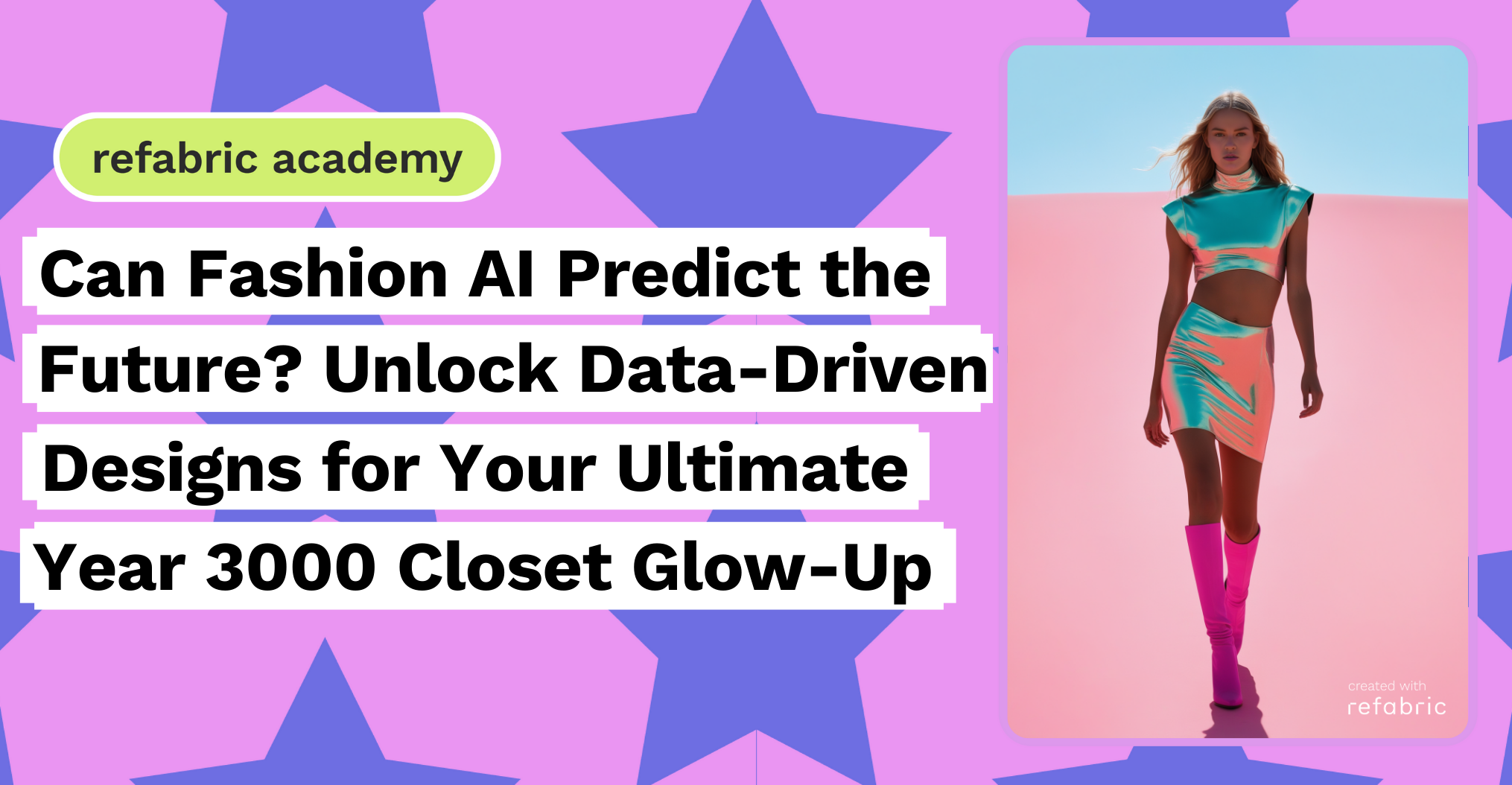One of the biggest advantages of fashion AI is its ability to analyze vast datasets. These datasets, which consist of current fashion trends, consumer preferences, social media content, and runway collections, enable AI clothing design to forecast future fashion trends with accuracy and efficiency. Y2K has been one of the most important keywords in 2020’s fashion. As nostalgia has been roaming around the fashion world, low rise-trousers, shimmering belts and long blouses came back for the second round.
Now we are calling for the future, “Hello, is anyone there?” Fashion designers have always seemed to look for the answer for the future, finding the next cutting-edge look that will bring a new color to the fashion world. With fashion AI design, closets for 3000s could be closer than we can imagine, bringing the future to the present.
Fashion AI: The Power of Data-Driven Design
With massive datasets, AI in fashion design is a great tool to analyze the present style choices to reflect what will be coming. As artificial intelligence technologies have grown more potent, forecasters are now looking to machine learning’s quantitative output for support. Large datasets of social media postings, runway show photos, search engine results, and online and in-store sales data may all be analyzed by these fashion AI systems to find patterns. This ability can help forecasters identify new trends more quickly and correctly.
Fashion AI tools can gather data from sources like Instagram, search engine results, and e-commerce platforms to identify emerging patterns and trends. For instance, as consumers begin to favor a certain color or silhouette, fashion AI can detect these shifts and use them to inform future designs. This ability to spot micro-trends before they become mainstream allows designers to create collections that feel fresh and timely. Rather than relying solely on intuition or historical references, designers can now access insights generated by AI in fashion design, giving them an edge in predicting and responding to future styles.
Fashion AI Forecasts Can Help Reduce Waste
Fashion AI forecasts can also have a significant impact on the carbon footprint of the fashion sector, which discards more than 92 million tonnes of fabric annually and is thought to be accountable for at least 4% of global emissions, according to the Global Fashion Agenda and McKinsey & Co. This is also a great way to reduce the waste that is coming out from the fashion industry. Thanks to fashion AI’s capability to predict the future, the clothes that are more likely to be sold would be the only ones to be produced and this will reduce the waste.
Y3K, here we come
Looking ahead, fashion AI could reshape how consumers interact with fashion daily. Imagine a 3000s closet that not only responds to your daily mood but also makes suggestions based on upcoming fashion trends. AI-driven algorithms could help you curate outfits based on weather, occasion, or the latest fashion insights, taking the guesswork out of getting dressed.
Moreover, AI clothing design could revolutionize how we shop. With AI-powered virtual fitting rooms and advanced styling recommendations, consumers could explore how different outfits look on them without ever setting foot in a store. By providing real-time feedback on fit, color combinations, and overall aesthetics, fashion AI could greatly enhance the shopping experience and reduce returns due to incorrect sizing or styling mismatches.
Although the 3000s are still a bit too early to think about, the distant future could feel so close with new AI clothing design technologies, imagining how this very different world and the fashion around could look like. According to Pinterest’s Summer Trends Report, Y3K was one of the most searched keywords up by 6030% on the app. This style, although celebrating a distant future, also aims to envision what beauty and fashion might be like in the 3000s, the following millennium.
With fashion AI, assumptions meet reality and catching up with futuristic trends is easier. The future of fashion is not just about following trends—it’s about anticipating them, and fashion AI is poised to lead the charge. Through its ability to analyze vast datasets, predict trends, promote sustainability, and enable customization, AI in fashion design offers a unique blend of innovation and creativity that will shape the fashion world in the coming years.
As we move toward the 3000s, expect AI clothing design to play a key role in how designers and consumers alike think about fashion. Whether through minimizing waste, creating bespoke clothing, or helping us predict what’s next in our wardrobes, fashion AI is bringing the future of fashion into focus today.
